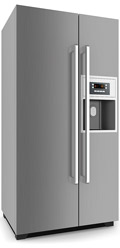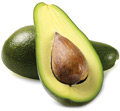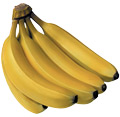
Eat More Fruits and Vegetables
Produce Storage Guide
Store in the refrigerator
Fruits
- Apples – If you will be keeping them more than 7 days
- Apricots
- Asian pears
- Berries (blackberries, blueberries, raspberries, strawberries)
- Cherries
- Citrus (grapefruit, oranges, lemons, limes) – If you will be keeping them more than 7 days
- Cut fruits – Stored in air-tight containers
- Figs
- Grapes
Vegetables
- Artichokes
- Asparagus
- Beets
- Belgian endive
- Broccoli
- Brussels sprouts
- Cabbage
- Carrots
- Cauliflower
- Celery
- Cut vegetables – Stored in air-tight containers
- Green beans
- Green onions
- Herbs (not basil)
- Leafy vegetables
- Leeks
- Lettuce
- Lima beans
- Mushrooms
- Peas
- Radishes
- Spinach
- Sprouts
- Summer squashes
- Sweet corn
TIPS
- Keep fruits and vegetables in perforated plastic bags (make your own by putting about 20 pin holes in a medium-sized produce bag).
- Store fruits and vegetables in separate drawers to minimize the damage of ethylene (a gas produced by fruits) on vegetables.
- Use refrigerated fruits and vegetables within a few days for maximum freshness and flavor.
Ripen on the counter first, then store in the refrigerator
Fruits
- Avocados
- Kiwi
- Nectarines
- Peaches
- Pears
- Plums
- Plumcots
TIPS
- Ripen fruits away from sunlight in a paper bag, perforated plastic bag, or ventilated bowl on the counter in order to prevent moisture loss.
- Put an apple with the fruits to be ripened to speed up the ripening process.
Store only at room temperature
Fruits
- Apples – If you will be using them within 7 days
- Bananas
- Citrus (grapefruit, oranges, lemons, limes) – If you will be using them within 7 days
- Mangoes
- Melons (cantaloupe, honeydew, watermelons)
- Papayas
- Persimmons
- Pineapple
- Plantain
- Pomegranates
Vegetables
- Basil (in water)
- Cucumbers 1
- Eggplant 1
- Garlic 2
- Ginger
- Jicama
- Onions 2
- Peppers 1
- Potatoes 2
- Pumpkins
- Sweet potatoes 2
- Tomatoes
- Winter squashes
- Cucumbers, eggplants, and peppers can be refrigerated for 1–3 days if they are used soon after removing from the refrigerator.
- Store onions and potatoes separately in order to increase shelf life.
TIPS
- Follow storage guidance for minimum damage and maximum flavor and texture.
- Place away from direct sunlight.
- Keep fruits and vegetables in a ventilated plastic bowl or perforated plastic bag to prevent moisture loss. Do not store in a sealed plastic bag, as this may cause spoilage.
Keep your fruits and vegetables safe

- Keep fruits and vegetables separate from raw meat, poultry, and seafood.
- Wash hands with hot, soapy water before and after handling fruits and vegetables. Make sure work area and utensils are clean.
- Wash all whole fruits and vegetables with running water and cut away damaged areas (bruised, discolored) before eating. Never use detergent or bleach to wash fruits and vegetables.
- No need to rewash packaged fruits and vegetables labeled ‘ready-to-eat,’ ‘washed,’ or ‘triple washed.’
- Refrigerate all cut, peeled, and/or cooked fruits and vegetables within 2 hours.



